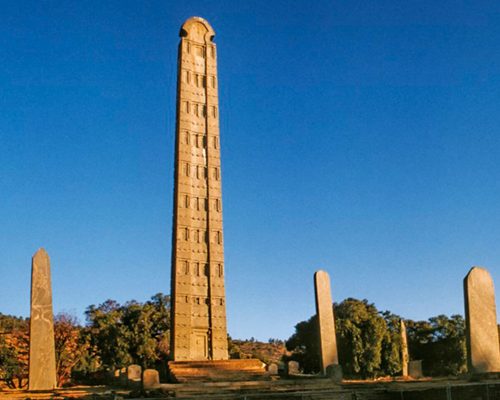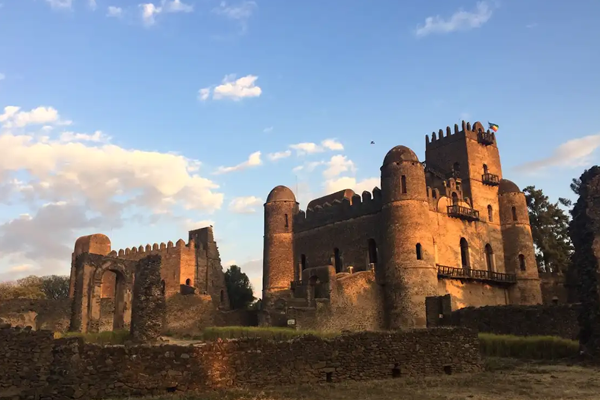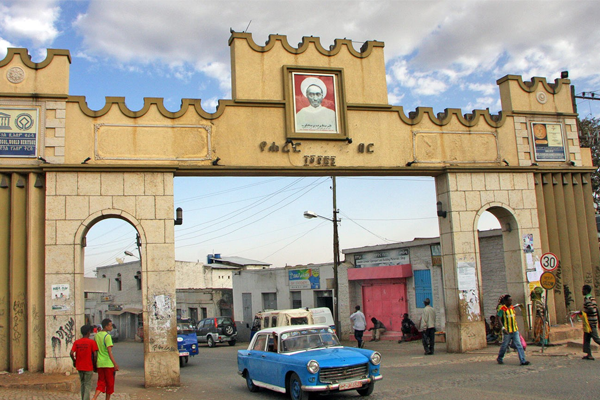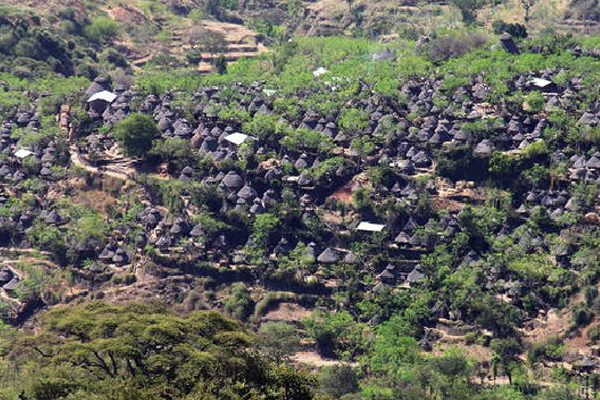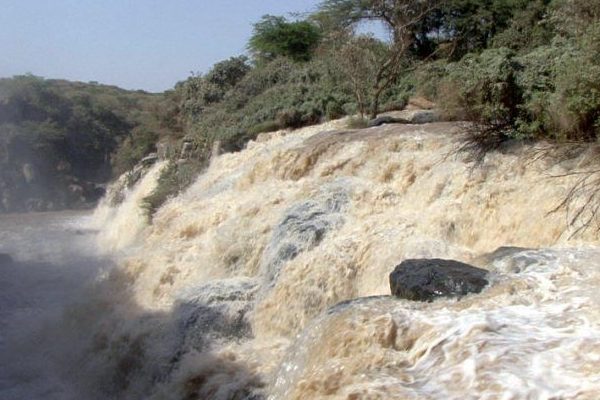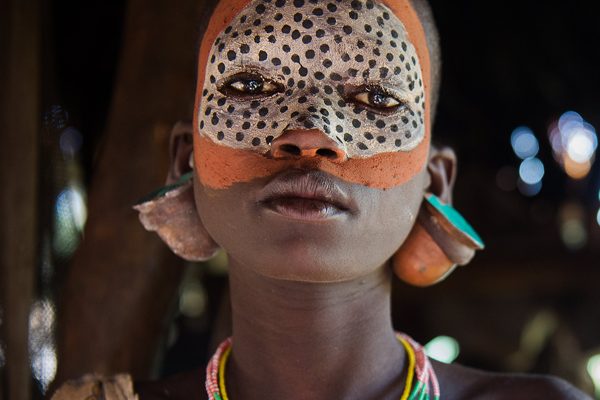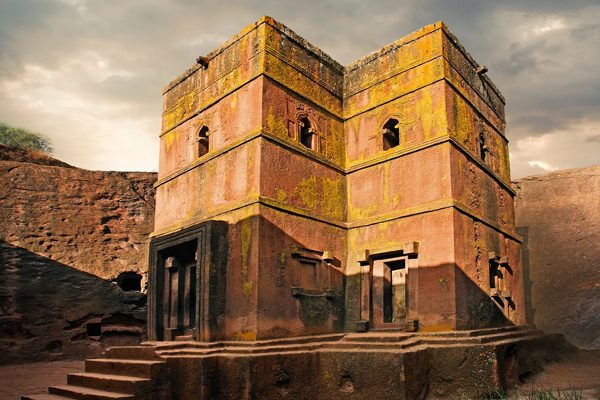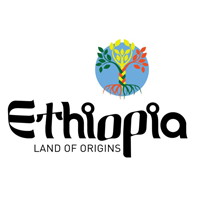Author: technobros_admin
Unesco World Heritage Sites
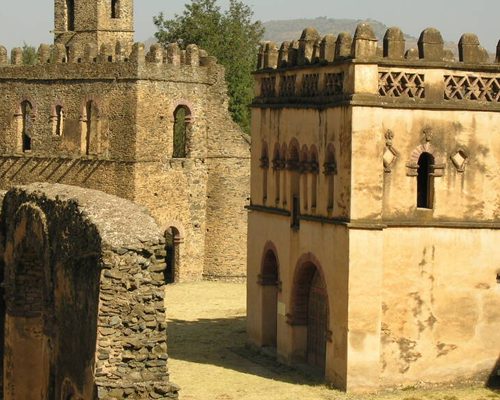
Axum
The ancient city of Axum is located in Tigray Region. Its exact geographical location is N14 7 48.684 E38 43 6.996. The massive ruins, dating from between the 1st and the 13th century A.D., include monolithic obelisks, giant stelae, royal tombs and the ruins of ancient castles. Axum and its archeologicalsites were inscribed in the List of World Heritage Sites by UNESCO in 1980.
Fasil Ghebbi, Gondar Region (1979)
This property included in the list of UNESCO World Heritage Sites in Ethiopia consists of eight component sites. The main site is the Fasil Ghebbi palace compound. Meanwhile, the other seven sites are located within the city of Gondar. These sites include a monastery, church, thermal area, bath, and a palace. Gondar was established as the capital of Ethiopia by King Fasil during the 17th century. By the 18th century, the site was transformed from a camp into a fortified compound.
Hara Jugol, The Fortified Historic Town (2006)
This historic and fortified town is located amidst a plateau with deep gorges. The fortified town is also surrounded by savannah and deserts. The walls that surround this sacred city were built from 13th century and completed by the 16th century. It is also believed to be the holiest city for Islam due to the rich collection of important Islam monuments notably including 82 mosques and 102 shrines. But above all, this town is culturally significant in Ethiopia as it showcases the fusion of Islamic and African traditions in a single town – both in terms of urban development, layout, and overall character of this town.
Konso Cultural Landscape (2011)
This is another cultural site on the list of UNESCO World Heritage Sites in Ethiopia. It is an arid property of stone walled terraces and fortified settlements. This cultural tradition has been around for over 21 generations (over 400 years) in Ethiopia. It is an excellent example of how the settlements and the humans living in the region adapted to the dry and hostile environment in the Konso highlands. Within the site, you will also find wooden statues that were put up to honor key members of the community. In fact, they have innovated the use of stone steles that indicate the passing of important leaders of the community.
Lower Valley Of The Awash (1980)
This site is not only important for Ethiopia but also for the entire African continent. This site holds the largest and most important collection of paleontological sites. The oldest of the remains on the site date back to more than 4 million years ago. This site is the perfect example of human evolution since the conception of humankind history. The biggest discovery on the site took place in 1974 when 52 skeletal fragments allowed the reconstruction of the famous Lucy.
Lower Valley Of The Omo (1980)
This prehistoric site at the lower valley of the Omo is famous all over the world. Several fossil remains were discovered on this site near Lake Turkana. The most notable fossil discovered here is the Homo gracile. It was fundamental in the study of human history and evolution. Included in this site is Fejej and Konso paleontological research sites wherein there are sedimentary deposits found that researchers trace back to the plio-pleistocene period.
Endemic Birds In Ethiopia
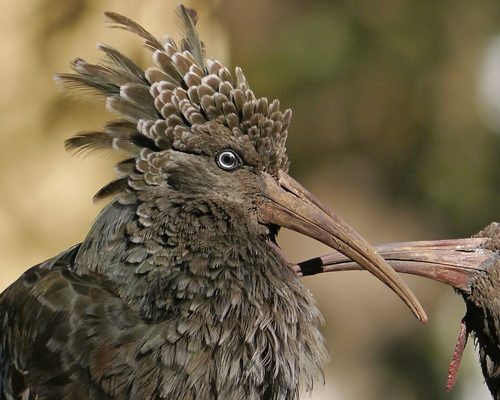
No other aspect of Ethiopia’s biology typifies its unique situation more than does its bird fauna. Ethiopia’s position, an extensive highland-island surrounded by arid lands, has enabled the evolution of many birds in the region into unique forms and species, Ethiopia hosts 862 known bird species, of which 23 are considered Endemic, limited within the confines of the Ethiopian borders. Ethiopia benefits from the incredible variety and abundance of African bird life as well as the presence of species, which have migrated from Europe.
Broadly speaking Ethiopia can be divided into a number of habitats with respect to bird life the Rift Valley lakes, the highland massifs, the lowlands, and the arid semi- deserts. Each of these is in turn a complex mosaic of terrain, soils, vegetation, and human use, all of which govern the avifauna found there.
Many of the endemic species present on the western and south- eastern highland plateau are common and surprisingly easy to see, even in the environs of a city. Endemic species include the Heavy- Headed Thick- Billed Raven; the Wattled Ibis, with its raucous call and unsightly habit of clasping its partner’s wattles and pulling; the Black- Winged Lovebird, which whirrs through the sky like a miniature helicopter; and the White- Collared Pigeon, a delicate-gray bird with a neat white collar and white wing patches. (Tour itinerary)
Songs of the forests
The highland forests are home to birds less easily seen. Their song is usually the first sign of their presence. The Abyssinian Catbird has one of the most beautiful calls, the male and female performing a duet in the seclusion of thick bush. The Black- Headed Forest Oriole has a distinctive call and its yellow color shows clearly in the upper storey of the tall trees it favors.
Two endemics are found in the southern edge of the plateau, in the Yabello area. These are the White- Tailed Swallow, and the colorful Prince Ruspolis Turaco. The last is on the endangered species list.
Bird life at Bale
The highland plateaus are home to many endemic species, and Bale Mountains National park harbors some of them. Among these is the Blue- Winged Goose, whose closest relative is in the Andes Mountains of South America. The Spot- Breasted Plover is very striking and can be seen in large numbers at some times of year. The comical Rougets Rail is often seen in grass clumps near water, its tail flashing white as it is flicked up and down. The Yellow-Fronted Parrot is usually first noted by its call and its typical fast parrot flight through the tall juniper trees.
The Banded Barbet is found over a large area; its chest is streaked with black. The Golden- Backed Wood Pecker has a striking golden color and will be seen searching the bark of the st.Johns wort trees in highland areas. On the other hand, the Abyssinian Long- Claw is ground dwelling, its bright yellow throat and chest a strong contrast to its black necklace. The White- Winged Cliff Chat has, as its name suggests, a white patch in the black wing and will be seen on cliffs or even on tall buildings in Addis Ababa.
Ruppells Chat is confined to the western highlands and is again seen on cliffs, often running from the road as a car approach, its white wing patches showing clearly. The White- Backed Black Tit is often missed because it is small and likes the shelter of trees. Large parties of Black- Headed Siskin are seen at high altitudes, often in the moorlands. White- Billed Starlings are in the Red-Wing group of Starlings and are distinguished by their ivory- white bills. In the group of seed- eaters, or Serins, three are considered endemic, though there is some discussion over this. These are the Yellow- Throated of the Sidamo area and the Ankober and Salvadoris seed- eaters. Harwoods Francolin is a little- known species found only in the gorges of the western highlands leading in to the Blue Nile gorge.
It is the extensive high- altitude plateaus that form the quintessential Ethiopian habitat – for birds in particular, but also for other forms of wild life. Most of the endemics are to be found here, as well as a considerable number of other species. Some of the richest areas are the small patches of natural forest on gorge edges, in inaccessible valley bottoms, and the often sacred groves on hilltops and around churches. (Tour itinerary)
Birds in Simien Mountains
Well over fifty species of birds have been positively identified in the Semien Mountains National Park. This includes an unusually large number of birds of prey and carrion-eaters. One of the most spectacular of these is the Lammergeyer, or Bearded Vulture. This magnificent bird with its three-meter wing spread is unusually common in the Semien, though it is found also in other parts of Africa, Asia and Europe. Its diet makes it one of nature’s rare phenomena: it eats bones and bone marrow. When an animal dies, the lammergeyer waits until the bones have been picked clean by other scavengers, and then it eats the smaller bones. The bigger bones it carries away to a flat, rocky spot over which it sails like a bomber and drops the bone from a height sufficient to shatter it to bits. When the bone is broken to manageable size, the lammergeyer eats the pieces.
Lammergeyers have been known to fly as high as 25,000 feet in the Himalayas, and they have been clocked at 79.5 miles per hour flying speed.
The Augur Buzzard is another species commonly seen in the national park. It occurs in several color variations. Adults are characterized by dark gray or almost black upper parts and a bright chestnut-colored tail. The underside may be completely white, white with a black throat and upper breast, or entirely black. The latter form – the melanistic phase – is somewhat more common in the Semien than elsewhere. Another interesting bird is the Egyptian Vulture, which has joined man, the chimpanzee, the sea otter and a few others in an exclusive clique of creatures who use tools. Eggs form a part of the diet of the Egyptian vulture. If the egg is large and difficult to crack, the vulture picks up a stone with its beak and throws it at the egg until the shell cracks. Egyptian Vultures have been seen opening ostrich eggs in this fashion.
Other large birds, which may be seen, include the Ruppells Griffon Vulture, the Hooded Vulture, and the Lappet-Faced Vulture. Of the species endemic to Ethiopia, the most readily observed are the Thick-Billed Raven, the Wattled Ibis, and the White-Collared Pigeon.
The Thick-Billed Raven is unmistakable. It is one of the largest of the ravens and its bill seems to be aspiring to the proportions of a toucan’s beak. This Raven has a deep, wheezing croak, like a frog with asthma. It often frequents campsites, looking for garbage. Some related birds, the Fan-Tailed Ravens, Cape Rooks and Pied Crows, might join it there. (Tour itinerary)
Birds in the Rift Valley Lakes
Ethiopians’ lakes are famous for the sheer numbers of birds they harbor. In fact at each of two locations in the Rift Valley over 50% of all Ethiopia’s bird species have been recorded, because of the proximity of numerous aquatic and terrestrial habitats. These are the Awash National Park with Lake Basaka and the Abijata-Shalla Lakes National Park.
Abijata is a feeding ground for numerous great white pelicans and Various sorts of Flamingos, as well as flocks of Little Grebes. The Pelicans nest in very large numbers on an island in neighboring Lake Shalla, which is almost fishless. Every day the birds have to thermal up and across the isthmus separating the two lakes to feed. Every few years Lake Abijatas waters recede spectacularly, causing a rise in alkalinity accompanied by major fish die-offs and a change in the algal composition of the waters. The Pelicans then have to fish further afield on lakes Langano, Ziway, Awasha and even Chamo and Abaya, while the Flamingos move further afield into neighboring countries.
An island in Lake Shalla, a regular breeding ground for Great White Pelicans, is also known to be a nesting spot for the greater Flamingo. The thousands of ice-pink birds coming and going over the water against the background of the lake shores are as wonderful bird spectacle as anywhere in the World. In the Northern winters the shores of these lakes are ringed with all sorts of waders – Ruff, Plovers, Sandpipers, Stints and many other species well known to bird-watchers of the Northern hemisphere. At the same time a large number of Ducks, will be found further from the shores, particularly Garganey, Shovellers and Wigeon.
The waters of these lakes are especially rich as breeding grounds for the larvae of various lakes fly species that in their turn attract thousands of Swallows and Martins from the North. For the same reason the trees and shrubs around the lakes shores are festooned in gossamer nets of dusty cobwebs as the spiders wait their turn for the hapless hordes as they hatch from the waters each day.
Fresher lakes produce a greater quantity and variety of fish. Here the day is scattered by the memorable cry of the Fish Eagle soaring high above, with the occasional Osprey in the season. Malachite Kingfishers flit like jewels along the banks and the Pied Kingfisher carries out its spectacular bombing runs on surface fish further out. In nearby grasslands other Kingfishers species plaque the insects, the lovely duet ting call of the Gray-headed being typical of grasslands in drier areas.
The mouth of the Horcallo River, which flows from Lake Langano to Lake Abijata, is an excellent site for bird watching, as it provides fresh water for the birds to bathe. The Goliath Heron and Marabou Stork await fish near the shore or in the case of the latter, watch for weaker birds in the milling flocks. There are also the Black-Headed and Gray Herons, which can be found inland feeding on the grass and crops. Egyptian Geese are also very common in these areas. Chestnut-Bellied Sand Grouse fill the air in their thousands near the lakes, leaving the water in groups that fly high and fast, wheeling and spinning, while giving their guttural calls. Spur-Winged Plovers are striking as they stand among the trees near the lakes, and the Crowned Plover resides closer to the shore here in more open grassland.
Coffee in Ethiopia

More than 1,000 years ago, a goatherd in Ethiopia south-western highlands plucked a few red berries from some young green trees growing there in the forest and tasted them. He liked the flavor and the feel-good effect that followed. Today those self-same berries, dried, roasted and ground, have become the world second most popular non-alcoholic beverage after tea. And, as David Beatty discovers in words and pictures, the Ethiopian province where they first blossomed Kaffa gave its name to coffee.
The story of coffee has its beginnings in Ethiopia, the original home of the coffee plant; coffee Arabica, which still grows wild in the forest of the highlands. While nobody is sure exactly how coffee was originally discovered as a beverage, it is believed that its cultivation and use began as early as the 9th century. Some authorities claim that it was cultivated in the Yemen earlier, around AD 575. The only thing that seems certain is that it originated in Ethiopia, from where it traveled to the Yemen about 600 years ago; from Arabia it began its journey around the world.
Among the many legends that have developed concerning the origin of coffee, one of the most popular accounts is that of Kaldi, an Abyssinian goatherd, who lived around AD 850. One day he observed his goats behaving in abnormally exuberant manner, skipping, rearing on their hind legs and bleating loudly. He noticed they were eating the bright red berries thatt grew on the green bushes nearby. Kaldi tried a few himself, and soon felt a novel sense of elation. He filled his pockets with the berries and ran home to announce his discovery to his wife. They are heaven-sent, she declared. You must take them to the Monks in the monastery.
Kaldi presented the chief Monk with a handful of berries and related his discovery of their miraculous effect exclaimed the monk, and hurled the berries in the fire. Within minutes the monastery filled with the heavenly aroma of roasting beans, and the other monks gathered to investigate. The beans were raked from the fire and crushed to extinguish the embers. The Monk ordered the grains to be placed in the ewer and covered with hot water to preserve their goodness. That night the monks sat up drinking the rich and fragrant brew, and from that day vowed they would drink it daily to keep them awake during their long, nocturnal devotions.
While the legends attempt to condense the discovery of coffee and its development as a beverage into one story, it is believed that the monks of Ethiopia may have chewed on the berries as a stimulant for centuries before it was brewed as a hot drink

